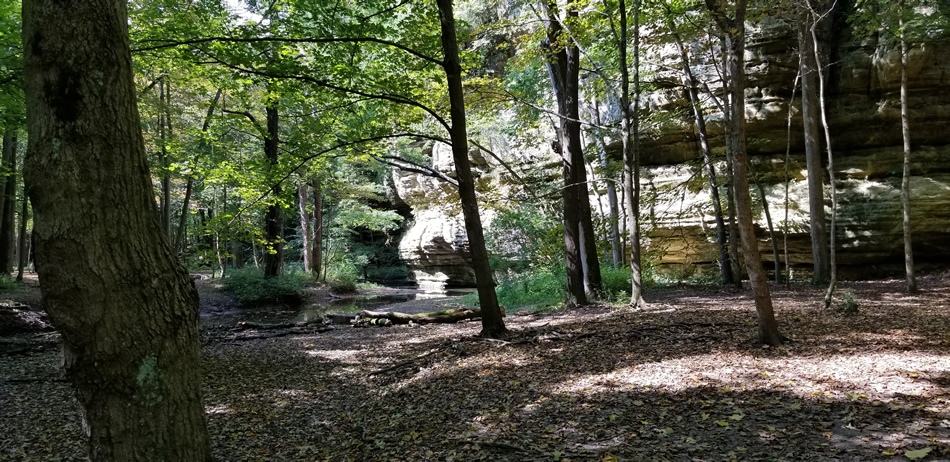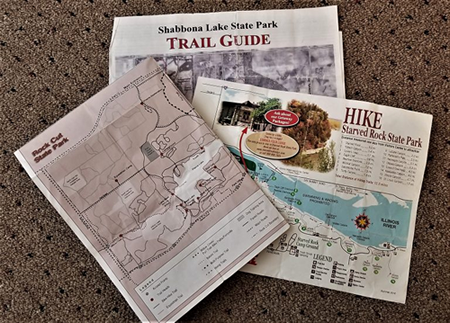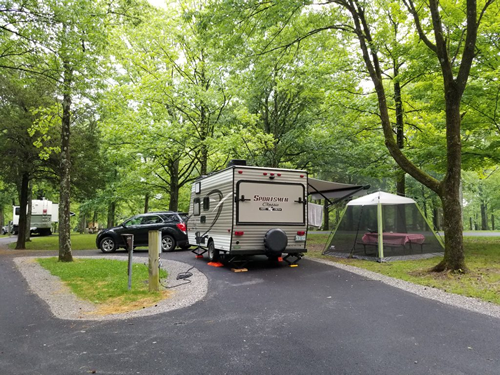
Welcome to Camping Enjoyment
We are indebted to those who lived before us when there were more open landscapes and who had the foresight to set aside land for the enjoyment of future generations. Forests, cliffs carved by rivers over the last hundreds or thousands of years, and other natural formations can be experienced by visiting our national and state park systems. Individual states have set aside thousands of acres of land over the years for recreation with miles of hiking, biking trails, and horse trails. Watershed management has given us thousands of man-made lakes for boating and fishing. In order to fully appreciate and experience the parks available to us, a wide variety of camping is available for those wishing to immerse themselves in nature. The park systems support primitive camping experiences with no electricity, vault toilets and water. For those campers who wish to experience nature along with some modern conveniences, campsites with electricity and access to public flush toilets and showers are also available. The parks described on this website are located in the midwestern states of Illinois, Wisconsin, and Michigan which all touch Lake Michigan.
In order to get the most enjoyment out of your exploration of the park system, it is to your benefit to research individual parks in the areas where you plan to camp to determine which parks have the facilities and recreation possibilities you hope to find. The internet provides you the opportunity to research individual parks in the areas where you plan to spend your vacation. Descriptions of the size of the park and a general description of the area can be found on these websites, in addition to camping and recreation information. It is hoped that this website provides useful information, gathered while camping at various parks over the past few years, not included on the official websites.
Plan Your Trip

The website for the park sometimes posts campground and trail maps that can be downloaded for your better understanding of the park layout. Trail maps are usually available at the camp office to assist you in choosing appropriate trails according to difficulty and length. In addition they may prevent you from getting lost while hiking.
Before you embark on your trip it is a great idea to make a list of all of the items you believe you will need. Check your list as you pack to ensure you do not forget anything.
Campsite Setup
Before you locate your campsite and back-in or pull-through, be sure to fill the water tank if pulling a trailer or driving an RV unless enough water is stored in your fresh water tank.
Once the campsite is located, observe whether trees on the site appear healthy, the slope of the ground, the probable path of rain water, where the fire ring is situated, and how close you plan to pitch the tent or park the trailer/RV to the road.
 Pitching your tent or parking your rig under a large limb of a tree that is not healthy is not recommended. In addition, if the likely path of rain water drainage is under your tent, you could wake during a rain storm from a sopping wet sleeping bag. Level trailers and RVs in order for the best operation of the refrigerator and do not forget to position chocks on the downhill side of the wheels for safety. The stabilizers then need to be lowered.
Pitching your tent or parking your rig under a large limb of a tree that is not healthy is not recommended. In addition, if the likely path of rain water drainage is under your tent, you could wake during a rain storm from a sopping wet sleeping bag. Level trailers and RVs in order for the best operation of the refrigerator and do not forget to position chocks on the downhill side of the wheels for safety. The stabilizers then need to be lowered.
To avoid hazards from fire, pitch the tent or park the trailer/RV far enough away from the fire ring. Beware of insect or animal openings in ground that could cause a problem during your stay.
Set up your dining canopy, if you brought one, and position the picnic table if necessary. A dining canopy over the table protects the table from rain and sun, depending on its size, and the campers from bugs attracted by food. Using a camp stove to cook meals outdoors keeps odors out of the trailer/RV and offers a different meal preparation experience. Cooking over the camp fire is an option if you plan to remain on the site for extended periods of time. If using a cooler containing food, store it in the trunk to avoid sharing it with the local animals, especially raccoons who are adept at opening them.
Bedding can be prepared for the evening repose as part of the site setup. Those sleeping in a tent, in particular, should set up the air mattresses or cots and sleeping bags or blankets and sheets during daylight to avoid arranging the sleeping quarters using flashlights. Sleeping quarters in an RV or trailer can even be prepared before the trip begins.